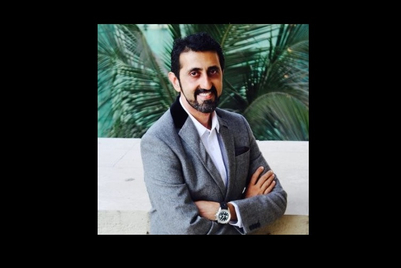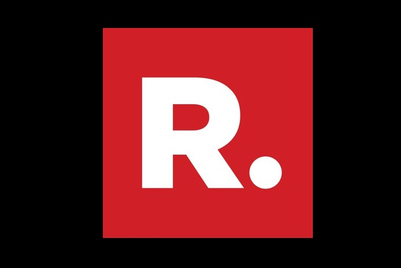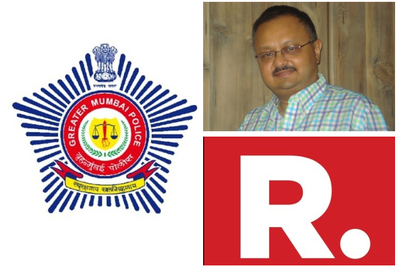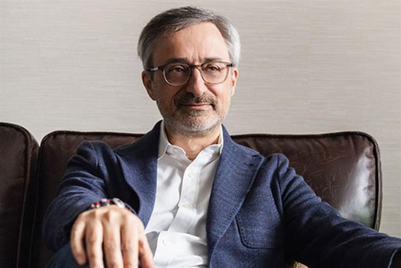The year 2020 will be remembered for more reasons than one. Although the entire advertising, media and marketing industry took a hit owing to the pandemic, further compounded by the economic crisis, news channels went on to take a bigger sip from the chalice of grief.
The uproar created in the news genre stemming from the
TRP manipulation scam caused massive skepticism in the minds of advertisers associating with news channels. After news broke out about certain channels tampering with BARC data to boost ratings, followed by
the arrest of the CEO of Republic TV Vikas Khanchadani and two others connected with BARC, marketers carefully evaluated their decisions on the selection of mediums and channels.
Television as a medium has always been an important part of most marketers’ media mix, but there was a short period where brands such as Amul, Bajaj, Dollar and Parle decided to boycott some channels on the grounds of toxicity, spread of hate and fake content. This pressed the media to be more cautious due to increased brand concern over the nature of content on news channels.
“If anything gets too polarised, marketers don’t want to associate with the TV channel at that point of time. However, it does not have anything to do with news as a category or as a channel, but more to do with the brand practises and brand ethos,” said Anand Bhadkamkar, CEO, Dentsu International India.
Even then, the value and reach of TV channels cannot really be undermined, according to MA Parthasarathy, CEO - Mindshare South Asia. “While more advertisers have leveraged the power of news, they have become more discerning in their choice of context and content,” he said.
Impact of the TRP scam on channels
MK Anand, MD and CEO, Times Network, believed that the channel stands to lose hundreds of crores in revenue if the allegations turn out to be true. He explains, “All we know is that the Joint Commissioner of Police - Crime, Mumbai Police made a statement on 25 December that Times Now TRPs were fraudulently suppressed by a cabal inside BARC. And that our real ranking as no. 1 was wrongly masked. Another channel was portrayed as no. 1 in English News.”
Republic TV, on the other hand, as an affected party, calls the situation a ‘witch-hunt’ aimed to tame a media house for raising its voice to challenge the narrative that it wants to prevail. Speaking about the impact of the scandal on the channel, Vikas Khanchandani, CEO, Republic TV, said, “People who are in the know, and who actually decide on these matters, are aware that what’s happening is not supported by any shred of credible evidence. All our agency partners and advertisers are extremely informed and are not distracted by the noise.”
Regardless of all the brouhaha over the issue, channels are now growing increasingly serious about maintaining viewer and brand trust. “News channels have also had the time to introspect during this no-rating period and focus more on building audience trust with credible and meaningful content,” said Mohit Joshi, CEO, Havas Media Group India, who expressed that clients and partners have raised concerns over the nature of content on news channels in the recent months.
Gaining advertiser and viewer trust
To assure viewers and brands, Republic TV populated the network’s use of Chrome DM’s OTS (Opportunity to See) currency, which broadcasters use to denote the number of households that have access to a particular channel. According to the TV OTS chart, the share of news genre expanded from 2017, post the entry of Republic TV. “We believe that when real facts emerge, and we are sure they will in due course, we will stand vindicated. Our viewers and partners are extremely empathetic towards us and continue to stand with us stronger than ever,” Khanchandani said.
Talking about its credibility, Anand shared that the Times media network gives as much importance to corporate governance and integrity as it does to its news content gathering and presentation capabilities. “We believe that long-term success cannot be sustained unless processes are above board. For us the means are as important as the end.”
Brand arm-twisting
That being said, media reports suggest that some broadcasters would engage in demeaning brands that would stop advertising on their channels. Mitigating any negative publicity is another reason some brands might have continued advertising, despite having no desire to.
News channels form a smaller subset of overall TV viewership, except for Hindi language services. There have been complaints from brands like Parle Products and Amul, which according to a media report, spends 35-40% of its total television budget on news. Speaking about this phenomenon, Bhadkamkar believes that every business has its ups and downs, but also assures that this sort of culture is not a practice and that marketers also have other advertising options.
Struggling niche channels are also gradually evolving with advertisers investing more in measurement and attribution of business outcomes. “The need for accountability and ROI has increased rapidly across media. So, the metrics of evaluation are also shifting from just output and media metrics to outcome and business metrics,” Parthasarathy says.
FMCG and finance brands have always been heavy advertisers of the TV medium. When asked about their mindset with regard to their advertising plans, Vipul Oberoi, CMO, IIFL, said, “TV shall continue to be one of the most important mediums in our marketing mix, especially when it comes to building a brand. Therefore, our confidence in the medium continues and we are not looking at reducing our TV spends,” he said, hopeful that any gaps would be adequately addressed by BARC.
Some have also captured debates on whether brands should be allowed to dictate the type of content that goes up on TV channels. Oberoi believes that brands must never interfere with or try to influence TV content, but must not associate with it should it find the content unacceptable.
Edelweiss Tokio Life Insurance, on the other hand, is adopting a wait-and-watch approach to see how the situation pans out. “While TV’s credibility has taken a hit and the pandemic has affected other changes too, especially in customer behaviour, we have always let the customer behaviour guide our ad spends and this year is no different,” said Abhishek Gupta, chief marketing officer, Edelweiss Tokio Life Insurance. He adds that digital has incrementally become Edelweiss’ media of choice over the past few years, since it has shown higher merit for investments.
When all’s said and done, the fact that TV has not lost its importance stands unchanged. TV, truly, has stood the test of the good times and bad.




.jpg&h=334&w=500&q=100&v=20250320&c=1)
.jpg&h=334&w=500&q=100&v=20250320&c=1)
.jpg&h=334&w=500&q=100&v=20250320&c=1)




.jpg&h=334&w=500&q=100&v=20250320&c=1)






.jpg&h=268&w=401&q=100&v=20250320&c=1)



